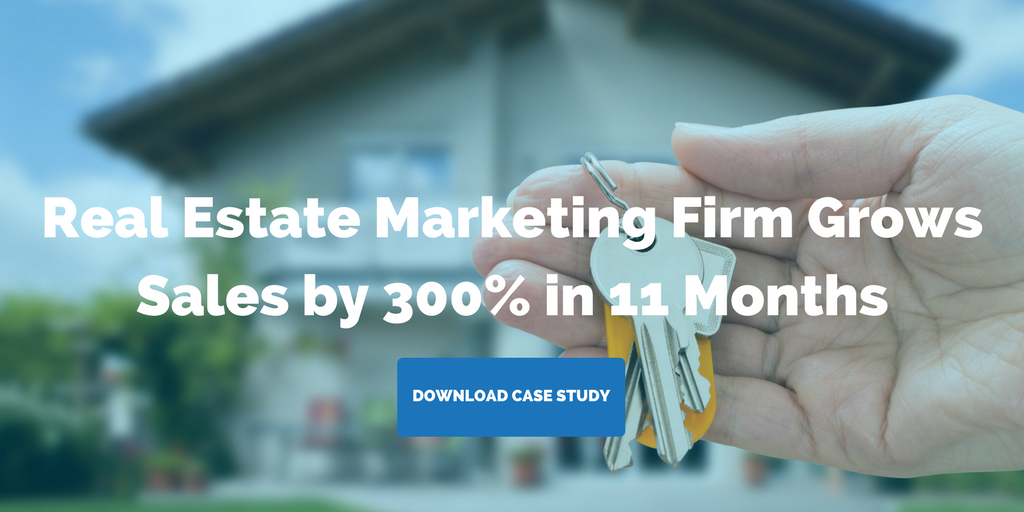Posts Tagged "email marketing"

How to Nurture Real Estate Leads with Content Marketing
Done right, content marketing is the most effective way out there to generate real estate leads—and to nurture them to fruition. Here’s how to make the most of this strategic resource.
If you generate a huge amount of leads, that means you’ll get an influx of new clients, right? Not so fast. Having an effective lead generation campaign is great, but it’s only half the battle. To produce actual business, you need a strategy in place to nurture real estate leads once you’ve attracted them.
An effective lead generation campaign means having a documented strategy, an effective website with strong SEO, good calls-to-action, and a robust social media presence. All of these things can be best accomplished with content marketing — and it’s your best friend when it comes to nurturing and converting those leads you’ve generated.
Nurture real estate leads with content marketing: a crash course
Before we get too far, let’s slow down and define what it means to nurture real estate leads with content marketing in the first place. In fact, real estate marketers are often so focused on generating leads, that this crucial part of the process gets overlooked.
At its most basic level, when we talk about nurturing a lead, we’re talking about continuing a conversation. When you generated the lead, you attracted the attention of a prospect, and planted the seeds of an ongoing relationship. But in order to germinate, these seeds need to be cared for — and that’s what lead nurturing is all about. You continue to stay in a conversation with your prospect from the first contact until they are ready to become a client.
Putting your content to work
“Lead nurturing campaigns focus on creating mutually-beneficial working relationships so that when it comes time to buy, that lead turns to you, or your business, instead of a competitor,” writes real estate marketing expert Vinny La Barbera. When it comes to staying at the forefront of a prospect’s mind, and successfully nurturing a real estate lead to conversion, there’s no better tool at your disposal than content marketing.
Social media is a perfect place to use content to nurture real estate leads. Connecting with your prospects, answering their questions, and sharing relevant, helpful content (particularly video!) is key to staying on your prospects’ radar.
Another effective way to use content marketing to nurture leads is with a blog. While some of your posts should be geared to generating leads, others should be written with a focus on cultivating existing relationships, and helping prospects decide to take the next steps. For real estate marketers, this means you can write about topics like the location of your properties, available features and amenities, and information about neighborhoods and communities.
Of course, email content is crucial to an effective lead nurturing strategy. The first step is to segment your email list, so that you’re creating targeted messaging for those at different stages of the buyer’s journey. Your emails should always include a call-to-action, to give prospects the opportunity to engage further with your brand and properties.
The bottom line
With any of your content marketing efforts, including nurturing real estate leads, the most important thing to keep in mind is that you are offering value to your prospects. By sharing your knowledge and expertise through your content, you’re answering the needs of your prospects and building their trust in your brand and properties.
Related posts:
- 5 Luxury Real Estate Brands that Use Content Marketing to Sell Property
- Video: How Content Marketing for Real Estate Can Help Sell Properties
- 4 Ways a Blog Can Help You Sell Real Estate
Posts Tagged "email marketing"

How to Use Guest Posting as Part of Your Content Strategy
Guest posting can help you build your reputation as a thought leader, grow your online reader base, improve your SEO, and expose your content to new audiences.
At Fronetics Real Estate, we use guest posting as a part of our own — and many of our clients’ — content strategies. Essentially, we partner with a relevant influencer or company, and swap content to post on each other’s blogs. It can be a really effective way to reach new, relevant audiences and provide interesting perspectives and voices to keep your core audience engaged.
What’s so great about guest posting?
Guest posting has all kinds of benefits. If you’ve identified a list of relevant influencers and companies with similar (and ideally wider) audiences, every time you post as a guest, your content and properties are exposed to a whole new segment of your target audience. We talk about this all the time when it comes to content marketing — your biggest asset isn’t your properties, it’s your expertise. Guest posting helps you establish your brand as a thought leader.
In addition to posting with real estate industry influencers and peer brands, guest posting for larger publications can be hugely beneficial, for obvious reasons. Not only are you introducing your brand and content to a broad audience, you’re associating yourself with an established authoritative source.
By the same token, having other brands author guest posts on your own blog is a great idea as well. When key influencers write for your blog, they bring their audience directly to you, allowing you to tap into a new and relevant set of prospects. Not only that, by inviting peers to contribute to your content, you’re forging and strengthening relationships within the industry.
Guest posting is great for SEO
Here’s a fact that’s often overlooked: Guest posting can significantly improve your search engine rankings (We’re always talking about how to improve your SEO.). Search engines use backlinks from other websites, particularly popular ones, as part of their algorithm for how search results are ranked. According to online business expert Sarah Peterson, in a guest article for the Huffington Post, “you can use the opportunity of your guest post to include 1-2 backlinks to strong pieces of content you want to rank for.”
Grow your email list
We all know that email marketing is hugely effective and profitable, if your email list is strong, and effectively segmented. Another often overlooked benefit of guest posting is that it has the potential to strengthen and enrich your email marketing efforts.
Because you’re being exposed to new audiences, both as a guest blogger and when guests write for your blog, you have the opportunity to target and cultivate new leads from relevant sources. Use guest posts as an opportunity to usher prospects to lead generation campaigns on your own website. Says Peterson, “if you’re not using this marketing strategy, you could be leaving a ton of email subscribers on the table.”
Involve your readers
As with any blogging efforts, you won’t get much bang for your buck if you simply author a guest article and do nothing to promote it. “You have to promote the article on your social media and through your own blog,” writes Tyler Zey of Easy Agent Pro. It’s also a good idea to solicit and reply to reader comments on your guest piece.
Are you a real estate professional who has authored a guest blog? Have you invited others to write for your own blog? Tell us about your experiences in the comments!
Related posts:
- 10 Quick Ways to Grow Brand Awareness
- 4 Types of Content You Need to Sell Real Estate (Besides Listings)
- A Visual Guide to Social Media Posting Frequency for Real Estate
Posts Tagged "email marketing"

4 Types of Content Real Estate Marketers Need to Be Using
As the real estate industry shifts, it’s time for marketers to shift with it. These four types of content are keys to marketing real estate in the digital age.
The real estate world has seen seismic shifts over the past few decades. Yet, it has been slower to change than other industries, which have been transformed nearly beyond recognition as the Internet continues to radically alter the way business is done.
The real estate industry is primed for innovation, particularly when it comes to marketing. As technology and digital media keep growing at unprecedented rates, real estate marketers have an opportunity to start putting different types of content to use to engage potential buyers and renters.
However, many are still slow to adopt content marketing. According to real estate investor Zamir Kazi, “Far too many in the real estate space simply still don’t get it when it comes to content marketing. I see so many still relying on old school methods vs. things such as social media, blogging and so on.”
For those willing to take advantage newer modes of marketing, the opportunities are vast.
If you’re a real estate marketer, consider making these four types of content part of your strategy:
1. Educational Content
You’ve probably heard the phrase “educational content” tossed around in discussions of content marketing, particularly in other sectors. Content that educates is highly preferred by buyers across the board and supports a fundamental principal of content marketing: your most valuable commodity is not your properties, but your expertise and thought leadership.
Creating content that educates your audience — for example, a piece about finding investment opportunities for your target client-base — establishes you as a trusted source of useful information. And it means your readers are far more likely to become your clients.
2. Branded Content
Creating effective branded types of content is all about ensuring that your audience is “consistently seeing your name, style, and thoughts,” while avoiding “being too promotional and one of those spammy real estate-types,” writes Forbes contributor Steve Olenski.
James Becker, CEO and founder of Fusion Growth Partners, suggests that the “story” of a brand should be at the root of all content and marketing efforts. “An agent’s story, if expressed well, conveys in an immensely impactful way, insight into that individual’s character, passion and commitment to their clients,” he says. “The story can create an almost tangible expectation for the reader to the level of service and authentic connection they will receive as a client.”
3. Email Content
Getting email content marketing right can be tricky. Of course, step one is gathering an email list. Olenski suggests that “When you think about your email marketing strategy, your first thought should be: ‘What content or experience can I create that will make someone give me their email?’”
Once you’ve established a list of emails, you can experiment with different types of content, and refine your list, segmenting it into different buyer types. Email marketing is a great place to experiment with automation.
4. Entrepreneurial Content
“Real estate is similar to entrepreneurship in that it requires sourcing projects and adding value through the process,” writes Olenski.
For example, according to Joe Pierson, CEO of BigKeyRealestate, “Agents should try to tap into the huge income potential of people who work in tech by framing real estate as an entrepreneurial endeavor suitable for their backgrounds. This is definitely difficult for the average real estate agent to do, but could open up a wealth of new buyers to work with.”
The bottom line is that content marketing is about generating value for customers and finding the types of content that cement your reputation as a trusted knowledge-source.
Related posts:
- Using Content Marketing to Market and Sell Luxury Real Estate
- 4 Types of Content You Need to Sell Real Estate (Besides Listings)
- 4 Real Estate Marketing Trends 2018
Posts Tagged "email marketing"

6 Tips for Creating Mobile-Friendly Marketing Emails
The majority of your prospective buyers and tenants are reading emails on their phones, so you’d better be sending mobile-friendly marketing emails.
My mornings are probably much like most of yours: As soon as my sleepy fingers can silence my alarm on my cell phone, I open up my email, before my feet even hit the floor. I will check my email again while I’m eating breakfast — and possibly a third time while I’m in line waiting for my coffee.
With the explosion of smartphones, more and more people are taking to their phones over their desktop computers to check email. It’s not hard to understand why; our phones are with us all day long. In fact, 54% of emails are now being read on a mobile device, a 40% increase in the last five years.
When a majority of your audience is reading your marketing emails on their mobile devices, it’s imperative that you’re creating emails that are optimized for mobile viewing.
Here are 6 essential tips for creating mobile-friendly marketing email campaigns.
1) Keep them short and sweet.
When writing copy or email, your content should be to the point. But this is especially true for mobile-friendly emails. Small screen size and increased likelihood the user is multi-tasking are just two reasons why efficiency is key.
Create messages that are easy for the eye to scan. Use bullet points or short paragraphs to keep the reader engaged. Strip out anything that’s not totally necessary, and drive recipients to landing pages for more information.
2) Less is more.
Not all mobile devices include your images. Android users, for example, will find their email images are off by default unless they change their settings. It’s also important to remember that large image files take longer to download. And nothing drives people away like slow load times.
What does this mean for mobile-friendly emails? Your content needs to be front and center, with less reliance on images. This can be tricky for real estate marketing, where the visual is key. But if your content is snappy and intriguing, readers will follow their curiosity and peruse images you link to.
3) Get to the point.
A typical desktop inbox displays about 60 characters of a subject line, while mobile devices show just 25-30 characters. Mobile-friendly emails place the offer or call-to-action at the beginning of the subject line where it’s more likely to be seen.
4) Get responsive.
We’ve all opened an email or webpage on a mobile device and had to squint to read it. Web content designed for desktop screens are barely legible when shrunk down to this size.
Try using a responsive template to ensure that readers are viewing your email the way you intended. Responsive emails use fluid tables and images to make content flow across different screen sizes.
5) Button it up.
I know it’s not just me and my fat fingers: Links are difficult to click on mobile devices! Instead try using buttons for your calls-to-action.
Make sure any CTA buttons are toward the top of your email, so readers know what you want them to do right away. Also, buttons should be large in size and surrounded by plenty of white space so readers don’t accidentally click on something else.
6) Test your work.
After making your emails as mobile-friendly as possible, don’t forget the most important step: testing. Send out test emails to your coworkers that use different devices to ensure that your emails look exactly like you want. With 98.4% of users reading email on Android and iOS, those operating systems should be your main focus.
Don’t lose readers before they’ve had a chance to open, read, and engage with your emails. Use these 6 tips for more mobile-friendly emails to help improve engagement rates, lead conversion, and profitable investor action.
Related posts:
-
Paid Digital Advertising: A Beginner’s Guide for Real Estate Marketers
-
4 Steps to Building a Successful DIY Content Marketing Strategy for Real Estate
-
This Is the First Thing You Should Do in Real Estate Marketing



